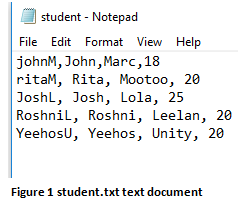Q1. Contrary to traditional population theory, metapopulation theory supposes that extinction of subpopulations is common. True or False?
Q2. One of the fundamental assumptions of metapopulation theory is that the dynamics of the subpopulations are asynchronous. True or False?
Q3. Although species express a diversity of life history traits, there is a common trade-off that all species must make. Species must weigh how much investment to put into reproduction versus their own individual growth and maintenance. The more investment they put into reproduction, the less energy available for them to maintain their own survivorship. The strategy they choose is referred to as a "life history strategy."
Generally, species that are long-lived tend to invest in which, reproduction or growth?
Q4. As a further generalization, species can be classified as r or K-selected. Species that are short-lived, exhibit high reproductive rates, are good dispersers, and are small sized are considered what type of species, r-selected or K-selected?
Population Sampling
Q5. Exercise 1: Random Sampling - complete the following steps
1. Tear a sheet of paper into 20 slips, each approximately 4cm x 4 cm.
2. Number 10 of the slips from 1 to 10 and put them in a small container.
3. Label the remaining 10 slips from A through J and put them in a second container.
The grid shown below represents a meadow measuring 10 m on each side. Each grid cell is 1m x 1m. Each black circle represents one sunflower plant.

4. Randomly remove one slip from each container. Write down the number-letter combination and find the grid cell that matches the combination. Count the number of sunflower plants in that grid cell. Record this number on the data table. Return each slip to its appropriate container.
5. Repeat step 4 until you have data for 10 different grid cells (and the table is filled out). These 10 grid cells represent a sample, and gathering data from a randomly selected sample of a larger area is called random sampling.
6. To calculate an estimated population size, (1) add all the grid cell sunflowers together and divide by 10 to get an average number of sunflower plants per grid cell, (2) record this number in the table, (3) multiply the average number of sunflower plants by 100 (this is the total number of grid cells) to find the total number of plants in the meadow based on your sample. Record this number in your data table.
7. Now count all the sunflower plants actually shown in the meadow. Record this number in the data table. Divide this figure by 100 to calculate the average number of sunflower plants per each grid.
Enter your data into the Excel spreadsheet attached. This spreadsheet will need to be submitted for grading to receive full credit.
Q6. Compare the total number of sunflowers you derived from SAMPLING to the ACTUAL count. How close are they? Are you satisfied with the estimated population size calculated? How could you improve your estimate?
Q7. Exercise 2: A random sample of the number of silver maple trees in a forest area that measures 5 miles by 5 miles. The number of trees counted per sampling grid is shown below.
Given the data below, what is the estimated population size of silver maple trees in this 5 by 5 mile forest tract? Show your work on Tab 2 of the excel spreadsheet.
Q8. Exercise 3: Mark-release-recapture (MRR)
Refer to Tabs MRR#1-3 to complete the next 3 questions. Remember to upload the spreadsheet to your student folder for grading.
To demonstrate the MRR method, do the following:
Step 1. Gather 30-100 small items (beans, beads, pennies, etc.) and some tape or a magic marker, and place a subset of them in a bag without counting them.
Step 2. Capture 10 "animals" by removing them randomly from the bag.
Step 3. Place a mark on them using tape or a dot of ink. This is the mark step of the MRR method.
Step 4. Return the 10 marked "animals" to the container; this is the release step of the MMR method.
Step 5. With your eyes closed, select 15 "animals" from the bag one at a time. This is the recapture step of the MRR method.
Step 6. Record the number of "animals" captured that have a mark (record your data in Ex. # 1 tab of the spreadsheet).
Step 7. Return the "animals" to the bag and repeat steps 5 and 6 nine times for a total of 10 recapture events.
Step 8. Record the total number captured and the number recaptured with a mark.
Enter answers in the worksheet platform but show you work in Ex. #1 tab of the spreadsheet.
a. What is the estimated population size?
b. Count the number of "animals" and specify whether you overestimated or underestimated N.
Q9. In order to estimate the population of geese in northern Maine, ecologists marked 10 geese and then released them back into the population. Over a 6-week period, geese were trapped and their numbers recorded. Use MRR Ex#2 tab to show your work.
a. What is the estimated population size?
b. Supposing more of the geese found in the trap had a mark, would the estimated number of geese in the area be greater or lesser?
Q10. A biologist at Necedah National Wildlife Refuge is responsible for monitoring the population trend of the federally endangered Karner blue butterfly. Given the data below, calculate the population size for the butterfly. Use MRR Ex#3 tab to show your work.
40 butterflies were originally marked, and over a month long period, 200 butterflies were subsequently captured. Of those 200, 80 were recaptures (i.e., butterflies with marks).
Q11. In using the MRR methodology to sample the Karner blue population, indicate whether the following assumptions must be made. Respond yes or no.
a. The population is a closed population.
b. Male and female butterflies must be equally likely to be captured.
c. Capture must affect recapture probabilities.